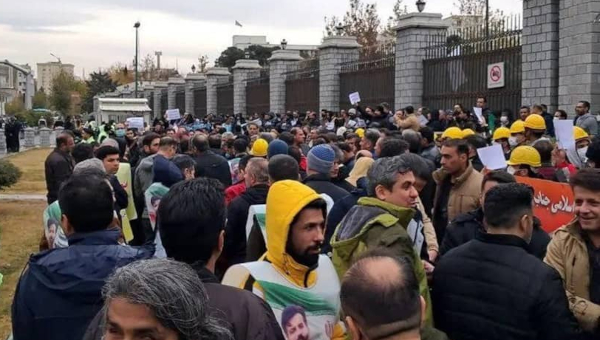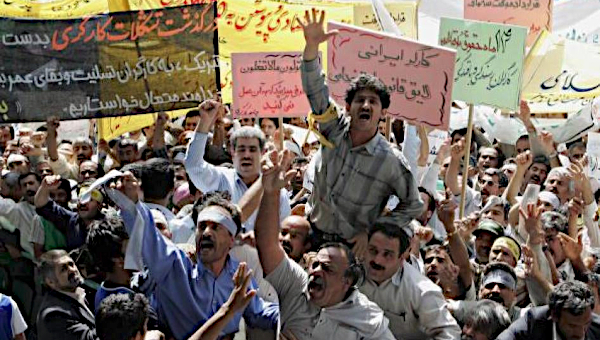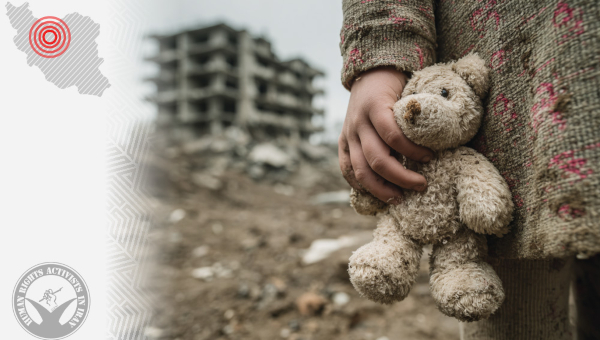Western Efforts to Interfere in Iran’s Civil Uprising
Over the past three months, the news media have focused on the recent protests in Iran. We are writing this essay in order to draw attention to the current risks to the Iranian feminist revolution. We are writing to highlight what is happening in our country of birth, Iran, a country that has always been of interest to the Western world, a country that during the last 100 years has frequently stood up for democracy only to be suppressed by domestic forces backed by Western powers. Iran’s women and young people are now rising up again, and their slogan “woman, life, freedom” is heard in all parts of the country.
A change in Iran cannot be implemented through interventions from the US and the West. Change of regime, election of leaders, and a coalition for a future free and democratic Iran must come from within the country. However, support is needed for the movement from the international community, including the UN and Amnesty International, in the form of political pressure and sharp condemnations against the Islamic regime.
The philosopher Spinoza said, “If you want the present to be different from the past, study the past.” Therefore, we begin with a brief history of Iran’s political struggle for democracy and the role of the West. Then we will return to the present.
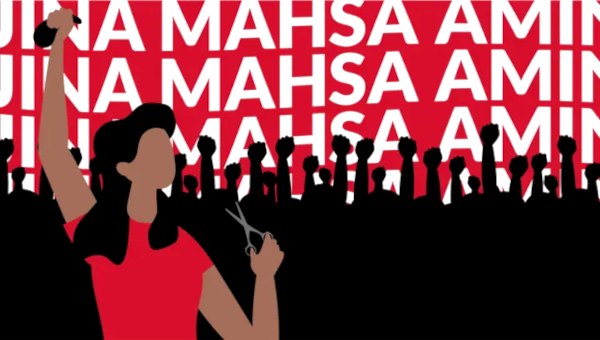
Iran’s Rich History
In 1905, a constitutional revolution began in Iran that lasted until 1911. The constitutional movement consisted of intellectuals and other social groups, whose aim was to replace the autocratic power of the monarchy with a parliamentary democracy and a modern legal system. After the success of the Constitutional Revolution, northern Iran was occupied in 1909 by Russian troops, and southern Iran was invaded in 1912 by British troops. During the First World War (1914–1918), the occupying British government seized a majority stake in the Anglo-Persian Oil Company and forced Tehran to sign an agreement that gave Britain a monopoly on various construction projects and army training. The Constitutional Revolution ended with a coup in 19261 in which Reza Khan Pahlavi I was installed as the king of Iran (1925–1941) with the support of the West, especially Britain.
A movement for democracy and independence began again in 1951 with the nationalization of the Iranian oil industry, which had been under British control since 1913. Mosadegh, then Prime Minister, represented national interests and fought to get the British out of Iran by taking control of the oil industry and reducing the Shah’s (Pahlavi II) power. The majority of Iranians supported his struggle and the Shah was forced to leave Iran. Out of fear of a free Iran and the influence of the Tudeh party, which was the Soviet-backed leftist party in Iran, Mosadegh was was overthrown by a coup staged by the CIA’s Operation Ajax2 which led to the reinstatement of Shah Pahlavi II. A long period of Pahlavi dynasty autocracy in Iran ensued until the revolution in 1979.
In 1979, a revolution began against Shah Pahlavi II. The revolution started in protest against the huge inequities based on social class in Iranian society as well as the lack of democracy and human rights. In January 1979, Shah Pahlavi II left Iran, and Ayatollah Khomeini, then perceived as less threatening to the West’s long-term strategies in the Middle East, returned from France. Khomeini had first been in exile in Iraq, but in order to be able to lead the revolution, he had to settle in France. This gave him a great opportunity to gain international support and work with the religious forces in Iran. Meanwhile, the Guadeloupe Conference was held involving leaders of four Western powers: the United States, the United Kingdom, France, and West Germany. Discussions focused on various world issues, especially the Middle East and the Iranian political crisis. Meanwhile, the United States sent General Huyser to Iran to advise the army to refrain from any coup attempt or any act of support for the Shah’s government.3 The revolution died before it could flourish.
Due to its geopolitical position in the Middle East and because of its rich oil and other natural resources, Iran has long been important to the West. Now the West feared that an independent and democratic movement in Iran could develop and spread across the entire Middle East, and therefore, threaten the interests of Western countries and even China and Russia. So the Iranian people had been fighting not only brutal dictators, they had also been resisting modern colonialism and imperialism for decades.
Modern Opposition and Protests
Now it’s happening again. Massive protests erupted in Iran after the tragic death of an Iranian-Kurdish woman, Mahsa Jina Amini on September 16, 2022 while she was in the custody of the so-called “morality police.” She had been detained for breaking the law by wearing her veil “incorrectly.” The wave of protests that followed is markedly different from previous protests, both in size, continuity, spread across the country, and resilience. The protests are still going on with undiminished strength!
The latest wave of protests involves considerable geographic, economic, and ethnic diversity among the participants. Intellectuals and activists worldwide call it the first feminist revolution.4 It is not isolated to a specific geographical area or an economic concern, but rather deals with several important economic and political issues, especially women’s issues. Women, who make up more than half of the population, are at the forefront, burning veils and calling for the death of the dictator. It is an extensive movement that may lead to a revolution, which, in turn, may give rise to the overthrow of the Islamic regime, something we very much look forward to.
We are hopeful and believe that changes in political power are on the way. However, we are also worried. We are concerned that it would not be the people of Iran but rather the West, especially the United States and NATO countries, that would enforce “regime change” in Iran. We are concerned that Condoleezza Rice (former US Secretary of State) has started a project called “Regime Change.” She applied for $75-million from the Senate Committee on Foreign Relations to be able to support domestic opposition, with the aim of overthrowing the regime in Iran.5 Some countries such as Saudi Arabia and Israel have come together with the “Regime Change” project, invested funds, and set up television channels against Iran: Voice of America, Iran Farda,6 Iran international, and ManotoTV7are some examples.
We are also concerned that in February, 2019, Masih Alinejad (who lives in New York and is active in the “Regime Change” project) met with military veteran Michael Richard “Mike” Pompeo, former Secretary of State in the Trump administration.8 A few weeks ago, Masih Alinejad attended a meeting at the Halifax International Security Forum to discuss “regime change” in Iran. A military attack on Iran was also discussed. In a meeting with Macron on November 11, 2022, she said in an interview with Iran international TV, that “next time I will take with me a formed coalition.” In early November, Alinejad called on Iranian opposition leaders to come together and create a Transitional Council. Another concern is that Shah Pahlavi III meets regularly with representatives from various organizations in the United States that have an interest in Iran in order to gain support9 for “regime change.” Such organizations have no interest in the people of Iran but rather are looking out for their own interests. On the first of December, 2022, one of the television companies that supports the “Regime Change” project announced that US special envoy to Iran, Robert Malley, said that President Biden will agree to a military option if the sanctions, pressure, and diplomacy do not work.
We are also worried about support for the “Regime Change” project initiated by People’s Mojahedin Organization of Iran (PMOI), an isolated religious group on the EU’s terror list. They are now stationed in Albania with the support of the United States. Trump’s lawyer, Rudy Giuliani, praised the PMOI as “the vision for Iran’s future” and emphasized that “the mullahs must go, the ayatollahs must go, and they must be replaced by a democratic government that PMOI leader Maryam Rajavi represents.”10 Pompeo also visited their camp in Albania and sat in on a five-hour meeting with the organization.
Strong Resistance Within Iran
We support the overthrow of the Islamic Republic but one that is initiated by people inside Iran. Iran is rich in intellectual, educated women and men who advocate for democracy and modernism. In the last twenty years, despite repression and autocracy, there has still been strong civil resistance. Women’s associations, trade unions, environmental movements, university student associations, etc. have been formed. Bar associations, writers’ and translators’ associations, cultural associations, as well as associations to support street children have flourished, one after the other. This process has required time, hard work, and widespread international recognition. During the ongoing protests, more than 15,000 people have been detained, many active in the above-mentioned associations. The movement we see today has been built up by those who have been active in the civil resistance for the last two decades inside Iran. Some of these are also known internationally: Nasrin Sotodeh (lawyer and human rights activist), Narges Mohamadi (journalist, physicist, and human rights activist), Tomaj Salehi (rap artist and activist), Jafar Panahi (screenwriter and director), and Esmail Abdi (teacher and board member of the Teachers’ Union).
In addition, hundreds of professionals in various fields in Iran – several of whom are now in prison can address the country’s economic, environmental – and social problems. These experts, along with the above-mentioned organizations and associations, may very well establish a new democratic system to lead Iran in forming a democratic, free, and independent country and one that may not necessarily be led by a single person. Iran’s history has shown that powerful leaders, whatever their ideology, eventually turn into dictators. 11
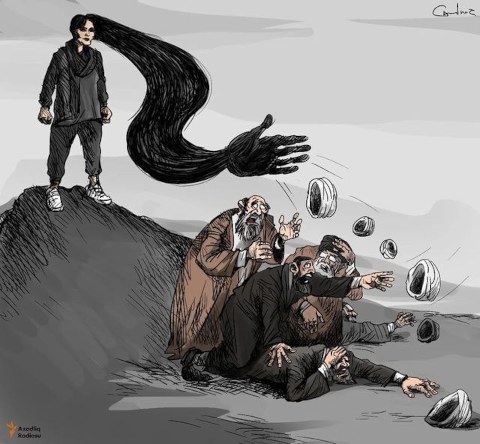
However, we see how in the West, conventional parliamentary systems can also fail to work as they should, as one after another extreme right-wing and fascist parties gain influence in different countries. In 1999, political science professor Erik Amnå wrote about a new democratic system, electronic democracy. “The new information technology is of interest to the Democracy Investigation. We analyze it to see if it opens up new ways to increase citizens’ participation and participation in social development.”
In Iran, information technology is well developed. Digitalization is present in every corner of the country, and the majority of the population, even in small villages, have access to computers and smartphones. Perhaps the new resistance movement in Iran can show a new way of governing the country using electronic democracy or other ways that can be developed during the process of regime change, such as the multi-actor governance model by which a broad mix of actors collaborates to deal with complex societal problems. No more Afghanistans.
It appears that the ongoing movement in Iran has no clear leader. It may be led by several different actors in the country. Regardless of how the country will be governed in the future, one thing is clear: Iran cannot fundamentally change and become a democratic country if the US and other Western countries or Eastern powers appoint a political puppet that supports their interests. What we ask from socialists and intellectuals is that any attempt at “Regime Change” or the building of an exile coalition outside Iran with the support of the West, in particular, the United States, be strongly condemned. •
Endnotes
- Ghorbani A., Reza Khan Coup. Grön bok publishing, 2022 (in Persian).
- Mike de Seve, Stephen Kinzer. Operation Ajax: The story of the CIA coup that Remade the Middle East. Verso Books (2015). “The CIA admits involvement in Iran coup.” SVT News.
- Khoshnood, A., and Khoshnood, A. (2018). “The West’s Role in the Shah’s Overthrow.” Middle East Quarterly, 25(3).
- Žižek S. “Slavoj Žižek Sends a Message of Solidarity to the Iranians Protesting Mahsa Amini’s Murder.” “Sverige måste stötta den feministiska revolutionen i Iran.” “Vi har verkligen letat, men tyvärr kan vi inte hitta sidan.” “Vi demonstrerar för den feministiska revolutionen i Iran.” “Iran’s Protests Are the First Counter-Revolution Led by Women.”
- “Rice Asks for $75 Million to Increase Pressure on Iran.” “Condi’s Baffling New Iran Strategy.”
- “Rice Is Seeking Millions to Prod Changes in Iran.”
- “Generous Investors Behind Manoto TV Have Lost 92 Million Pounds.”
- “Secretary Pompeo’s Meeting With Iranian Women’s Rights Activist Masih Alinejad.”
- “Prince Reza Pahlavi Holds Talks with US Jewish Leaders,” Kayhan Life. Video: Prince Reza Pahlavi Speaks About His Meetings With US Legislators. radiofarda.com. “Would-be monarch of Iran to brief umbrella org for US Jewish groups,” Responsible Statecraft. “Iran’s former crown prince rallies support for regime change.” axios.com.
- “Why is this Iranian regime change cult building a base … in Albania?” Middle East Eye.
- Ahmadi, N., Ahmadi, F. (1998). Iranian Islam; The Concept of the Individual. MacMillan Press.


